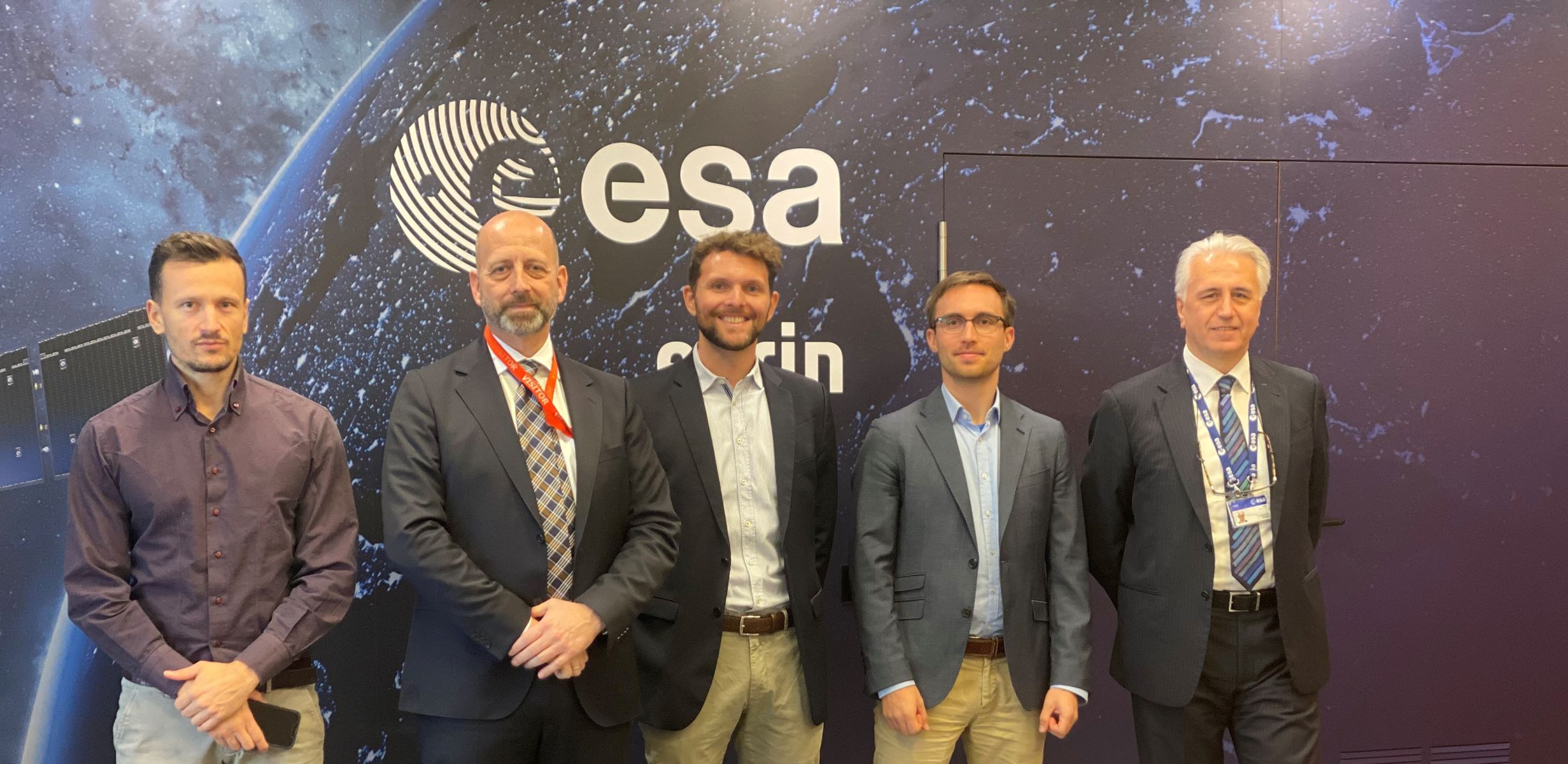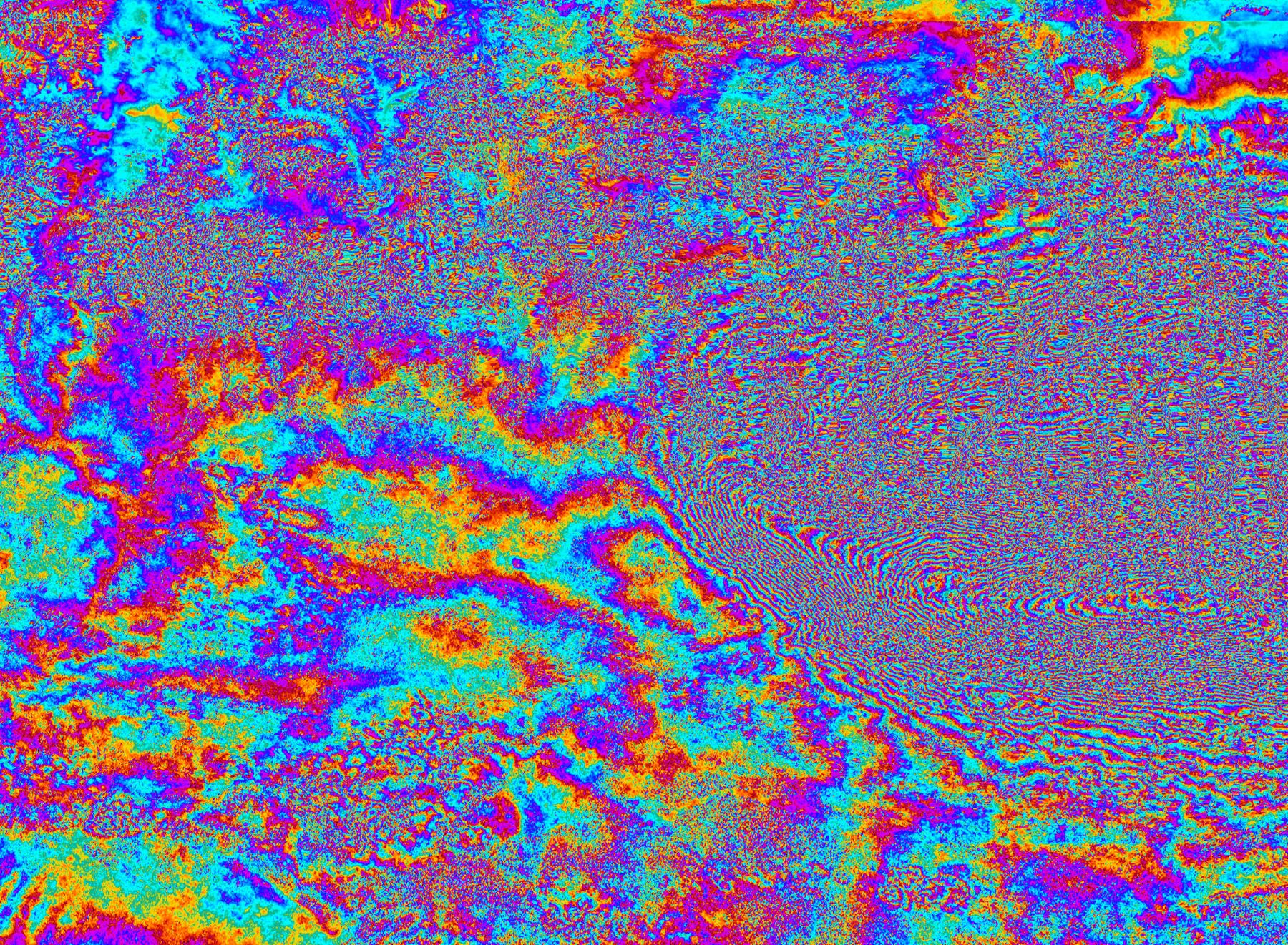At a ceremony today at ESA’s ESRIN establishment, German company constellr signed a contract extension to design, develop and customer-validate its HiVE solution with ESA InCubed technical and financial support. Through the development of a microsatellite with an innovative Thermal Infrared (TIR) payload, HiVE will place advanced-warning data on crop stress at the fingertips of agribusiness companies, smart-farm operators and government policy makers.
Traditional approaches to measuring crop water-stress conditions include monitoring irrigation systems, indirect measurement of field temperatures, or aerial remote sensing of temperature via drones, all of which have drawbacks. Satellite remote sensing is available, but generally relies on optical imaging of leaf colour changes, meaning that at the time of detection irreversible crop damage has probably already occurred. Thermal infrared satellite measurements, which eliminate these drawbacks, are however becoming increasingly available.
constellr GmbH, a New Space start-up with offices in Freiburg and Brussels, saw an opportunity to provide immediate monitoring of crop health through specifically created TIR Earth observation satellites. By directly measuring leaf temperature from space, changes in plant transpiration can be spotted so that farmers can take remedial action days or weeks before critical crop deterioration ensues. constellr’s HiVE (High-resolution VEgetation monitoring) system will encompass a constellation of microsatellites with miniaturised TIR sensors in combination with a global ground-station-as-a-service infrastructure and cloud-based data platform. HiVE’s toolset will give both commercial and institutional customers actionable insights on crop conditions, helping to reduce the risk of crop loss and improve yield predictions.
The HiVE development is technically supported and partially funded by the ESA InCubed programme. At the contract extension signing today, constellr CTO Marius Bierdel commented on the significance of the investment: “Supported by the technical expertise and funding of InCubed, constellr is able to expedite the development of its first commercially operational satellite. This is a critical early part of our rapid infrastructure development cycle – a major driver for our competitiveness in the market and the key to bringing us a step closer to being a successful player in the space ecosystem.”
The German National Delegation to ESA was also represented at the meeting. “HiVE is the largest investment that we have made so far within InCubed,” explained Michael Nyenhuis, InCubed Programme Coordinator at the German Space Agency at DLR. “Given the current global issues of drought and food shortages, today’s launch of this development initiative is particularly timely, and we are sure that the final product will have a decisive role in optimising future irrigation management and biomass output.”
“This is a great example of how ESA can aid private-sector advances on solutions to climate problems and support a promising business initiative relevant to the agribusiness sector,” added ESA Director of Earth Observation Programmes Simonetta Cheli. “The technical support and business advice from ESA will undoubtedly provide an essential springboard for constellr in its journey to mission readiness and ultimately the delivery of this crucially important service.”
To know more: constellr, ESA InCubed, DLR





